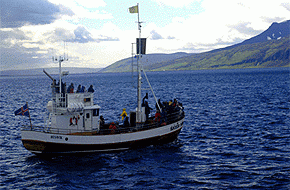
By Allan Barber
Ogmundur Knutsson, Dean of the school of business and science at Iceland’s University of Akureyri, was in New Zealand in early September to give a keynote speech at the conference Charting Pathways for Maori Industry Future.
He is an expert in the Icelandic fishing industry which has moved from a low cost, harvest-driven model to a market-driven, value added model within the last 40 years.
He believes New Zealand is trapped in the same low-cost industry operating model that existed in Iceland and needs to change its thinking to lift the fishing industry’s profitability.
The dramatic improvement in Icelandic fishing returns since it changed from the old, low value, largely frozen model to a new high tech, mostly chilled model provides a very good lesson for our fishing industry.
Without having any firm knowledge base of how our fishing industry operates, I was struck by the philosophy which appears to have potential to be applied to other New Zealand commodity sectors, such as the meat industry.
Knutsson told attendees at the conference that fishing accounts for more than 40% of Iceland’s exports, gets no state subsidies, has no domestic market and lifts per capita GDP to a figure 32% higher than New Zealand’s. Bear in mind Iceland’s banks were effectively bankrupt less than a decade ago.
There are several parallels between the two countries – commodity based economy, export dependence, no subsidies, a high exchange rate leading to the need to add value. Iceland appears to be further down this track than New Zealand.
However Iceland may be closer to its main markets, but to maximise value fish must be airfreighted to European customers as fast as possible, a minimum of 2,000 kilometres. Our main markets in Asia are 8,000-10,000 kilometres distant, but flights are frequent.
A major hurdle for high value chilled products may be the big difference between fish, governed by quota, but not farmed, and other types of agricultural produce produced by growers.
While some of New Zealand’s export markets are restricted by quota, others by tariffs or a combination of tariff and quota, fish is the only commodity for which production or catch is similarly restricted.
Increasing quantities of meat are sent chilled by air and sea which has enabled exporters to add a substantial premium to the value of a carcase in recent years.
Co-products are also being saved and sold at a price that adds to the value of the animal, but the decline in the wool price has largely offset the gains from other products. Consequently values have been insufficient to compete with other land uses.
Unfortunately prime beef and sheep numbers are continuing their downward trend because there are better returns from dairy farming and, more depressingly, dairy support. While these cows will eventually find their way to the meat works, the output will be exported as grinding beef for the fast food trade.
-------------------------------------------------------------------------------------------------------------------------------------------
Farms For Sale: the most up-to-date and comprehensive listing of working farms in New Zealand, here »
-------------------------------------------------------------------------------------------------------------------------------------------
New Zealand’s meat industry, in particular, is facing a chicken and egg challenge to decide whether a premium product or premium markets should come first. If the product doesn’t exist, the consumer will never know he or she wants it; but conversely if there is no market willing to pay a higher price, the grower may not bother to produce it.
This is where the ‘one size fits all’ industry structure fails. It is the smaller, more nimble niche marketer who will identify the premium customers and source the product to fill that niche. Some of the most successful initiatives have come from innovative farmers or groups of farmers who have decided to find premium opportunities for their production, instead of accepting an average price for an average product.
The more farmers who are prepared to produce a premium product and demand that it be marketed to consumers willing to pay a premium for it, the further up the value chain we will move. It won’t happen overnight, but it will happen.
---------------------------------------------------------------------------------------
Here are some links for updated prices for
- lamb
- beef
- deer
- wool
Y Lamb
Select chart tabs
---------------------------------------------------------------------------------------
Allan Barber is a commentator on agribusiness, especially the meat industry, and lives in the Matakana Wine Country where he runs a boutique B&B with his wife. You can contact him by email at allan@barberstrategic.co.nz or read his blog here ».




We welcome your comments below. If you are not already registered, please register to comment.
Remember we welcome robust, respectful and insightful debate. We don't welcome abusive or defamatory comments and will de-register those repeatedly making such comments. Our current comment policy is here.